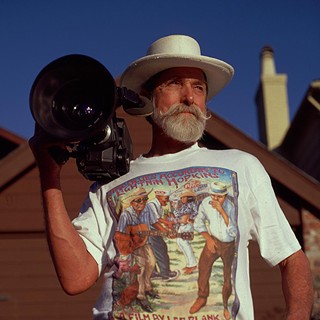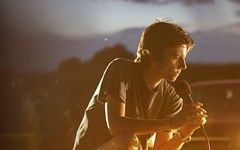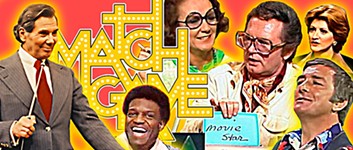Counterculture Time Capsule
Forty years later, Les Blank's Leon Russell rock doc sees the light of day
By Lars Nilsen, Fri., March 13, 2015
The late documentarian Les Blank filled a special role in American musical history. He was a bit like the music writer Peter Guralnick or folk music collector/scholars John and Alan Lomax. Though he made all kinds of documentaries, Blank's music films are deep, sympathetic dives into the world of roots musicians and into the (often weird) cultural tides that bear them afloat. Blank's profiles in celluloid of Lightnin' Hopkins, Flaco Jiménez, Lydia Mendoza, Dizzy Gillespie, Mance Lipscomb, New Orleans Mardi Gras tribes, and countless others are invaluable cultural documents – and of course they are a lot of fun to watch, too.
In 1972, the hyper-talented, hard-partying former session musician and highly touted rock star Leon Russell decided to produce a documentary about his life and music. Joe Cocker's Mad Dogs & Englishmen, featuring Russell, had been a major hit, and had helped Cocker's record sales in the process. Russell and his producer wanted the same sales boost.
The AFI recommended Blank to Russell's producers, and he was posted to rural Oklahoma to document Russell's recording process and freaked-out lifestyle. It ended up being a two-year gig. Blank and his assistant Maureen Gosling set up a state-of-the-art flatbed editing rig in the middle of nowhere, and they made several other films during the Russell shoot. Blank and Gosling, along with their friend, legendary Austin artist Jim Franklin, even outlasted Russell and the musicians, who grew tired of the remote Oklahoma locale and its lack of social (and presumably pharmaceutical) conveniences.
Russell was gifted with rare talent. Had he been born a generation earlier, he might have been a star in the Grand Ole Opry or even a first-generation rock & roll grinder. By 1972, he was one of the last runners left upright in the exhausting last few miles of the countercultural marathon, and it shows. Time had run out on the Sixties, and the drugs that kept the party going were beginning to wear off. Into this aggregation of swaggering session men, graying cosmic voyagers, and – oh yes – legendary musicians like Willie Nelson and George Jones wades Blank with his camera. "It was like a giant home movie," Blank said. "I shot whatever looked interesting and then found a way to throw it all together."
The looseness of his approach works. This is after all a document of a group of loose people hanging together loosely and falling apart in the same way. There is a lot of music, and a lot of "hey man" philosophizing. Franklin is seen painting a vast swimming pool mural, and an enthusiast of building demolition shares his short films. It's pretty far out, and it's beautiful, thanks to Blank's photography.
Such films tend to appreciate in interest and value as time goes on, and we can see this film now as a musical and cultural artifact, shot through with Blank's humor, perceptiveness, musical taste, and penchant for fast, weird company. Blank was no impartial sideline observer. He had a stake in the cultural revolution and in America's musical heritage.
The film eventually became mired in legal difficulties and could only be shown with Blank in person per a complicated court settlement. (He passed away in 2013.) Finally, the parties have reached a settlement that allows A Poem Is a Naked Person to be shown at SXSW. A Janus Films theatrical release and Criterion DVD release will follow.
24 Beats Per Second, World Premiere
A Poem Is a Naked Person Monday, March 16, 9:30pm, Topfer Tuesday, March 17, 2:30pm, Paramount Thursday, March 19, 5:15pm, Marchesa












